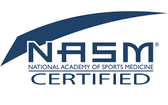|
(Disclaimer: this is a very long race report but then again, so was the race.) In the beginning of the year, I was determined to finish a 50-miler by the end of the year and Lookout Mountain 50-mile trail race was my goal race for the year. There is a popular saying in athletics, especially endurance sports such as running and long-distance triathlon (and in Star Wars), about remembering and trusting in your training. Due a couple of unfortunate events, starting with the passing of my father in Nepal at the beginning of October and continuing with a major ankle sprain a month from LM50, it was safe to say my training had been majorly derailed. In the three months prior to LM50, I had only averaged 28.5miles a week for 11 weeks. My longest run had been only a piddling 18miles, a month prior, and my highest weekly mileage was a scant 39miles, eleven weeks before the race. This was turning out to be the worst idea ever! Decemeber 14, 2013. This was the most nervous I had felt before a race in a very long time. The only event that could compare in time I would be spending on the course would be Ironman Louisville, which I had done the year before but I was not quite as nervous for that one as I was now for the Lookout Mountain 50-mile. My woefully inadequate training was definitely the contributing factor. My only comfort was that I had managed to squeeze in 45miles-in-seven-days training block a week and a half before the event and a mere two weeks after my major ankle sprain. Pitter patter, pitter patter. Previously a light pleasant drizzle at 5am, the rain was now a full-on downpour two hours later. The temperature read 40F. My friend, Fidie, who was also doing the 50-miler, along with her boyfriend, Rob, who was crewing for her, and I had just arrived at Covenant College on the top of Lookout Mountain. I downed a Vespa and proceeded to get drenched while waiting in line for the porta-potties. I was just wearing a long-sleeve Mizuno Breath Thermo top with shorts and a Salomon light jacket to keep off the rain and keep me warm. Thus far, since I was not running yet, I was neither dry nor warm. Waiting at the finish line, were 280 runners, shivering and crammed under tents and umbrellas; everyone fighting for what little dry, warm spot they could find. With two minutes left to go, the starting chute was still completely empty when, in the blink of an eye, with a minute left to the start, we flooded into the chute, like shoppers on Black Friday morning. The gun fired and we were off, celebrating, accepting or resigning ourselves to something akin to fate. Whatever nature conditions may be, they are what they are now. Covenant College (start – mile 0) to Craven House Aid Station (mile 6) I started off rather conservatively in the middle of the pack as I did not know how my ankle would respond. My initial plan was to use the first 6miles to Craven House Aid Station to warm up - to go slow and let the muscles slowly warm up to avoid cramping as well as let my mind settle down and get comfortable for the race. The bad weather eased my mind somewhat as it helped release the pressure of doing well in good conditions. In that sense, I always seem to be more comfortable in more adverse conditions. Hence, the best/worst idea concept. As we hit the single-track Covenant Trail after the first mile of road, I settled in behind a conga line that was cautiously navigating the slick, narrow trail traversing the side of the mountain. I was content holding an easy pace, averaging about 11.00min/mile. The rocky bluffs next to the trail were a beautiful sight to behold and made for stark contrast to the lush, green nature around it. Unfortunately, we couldn’t see very far into the distance and admire the view from atop the mountain, as it was extremely foggy. The fog was to last for most of the day. The wet, muddy conditions turned what would normally seem like a runnable descent that one could just bound down, into a rather technical, treacherous downhill where we had to pick our way down the slippery slopes. I was being more cautious than usual on account of my weakened ankle. On some of the exposed ridgelines, we were buffeted by strong winds and stinging rain, which made it feel significantly colder. It reminded me of when I was caught in a freak once-in-a-decade snowstorm atop Dead Woman’s Pass when hiking the Inca trail to Machu Picchu. That was a snowstorm. This was rain. No big deal. At mile 5, I started to feel settled in, grew more confident and was starting to get impatient at the pace. I had a very minor ankle tweak earlier at mile 3 but it was holding up really well. At mile 5.5, I decided to pick up the pace and pass a train of 4 that were gingerly picking their way downhill. So much for a conservative race strategy but I knew that we had a lot of uphill after mile 13 or so, so I had some time to make up. I had to play to my strength, which is navigating and running downhill, so I was running out of miles where I could do so. I bombed down the hill into the Craven House aid station and straight out, not pausing to grab anything. I acknowledged Rob and some other crews on the way out and started picking up the pace (or so I thought). Craven House Aid Station (mile 6) to Nature Center Aid Station (mile 13.5) I made my way down the long, runnable switchback with a couple of people, putting down the hammer where I could and pulling back when I thought I was out of my easy, comfort zone. The mud and puddles made it a little hard to keep a consistent pace but on some of the flatter, gravel paths, I started to hit 7-8min/mile paces. We hit some rolling hills and technical areas before dropping onto a fast, wide double-track path that led into the picturesque Chattanooga Arboretum and Nature Center. During the rolling sections before the double-track, I had ended up chatting with a 45-year old archeologist that had done a stint at IU. He told me about how, this past summer, he had done a 1000-mile run from Springer Mountain, Georgia to Ramsey, NJ in over two months. You can meet some really amazing people on some of these trails. I felt really bad when I dropped him as he had been great company but as he had told me - “Use whatever you can whenever you have it.” I was concentrating quite hard on maintaining good paces and enjoying other runners’ company that I was not eating as often as I should have. I had been having a gel an hour with some EFS electrolyte mix but, since I haven’t really been training to burn fat, I was using a lot more carbohydrates than I would be otherwise. I was starting to get hungry. On the plus side, the downpour had stopped about 2 hours into the race so there was something to celebrate. We wound around a very scenic lake and a greenhouse to hit a dirt road, which led to a single-track trail next to Lookout Creek that led to the aid station. The course guide described it as fantastic. I describe it as wet and muddy but the scenery was amazing. With the mist and fog, it was a very serene and surreal scene to be in, which calmed my nerves about the upcoming section and allowed me to just be in the moment and enjoy the experience. I was starving as I hit the aid station. I improvised and ate a couple of Fig Newtons, took a spare Hammer gel, filled up on some water and mentally prepared myself for the enormous climbs ahead. Nature Center Aid Station (mile 13.5) to Covenant College (mile 20.1) Less than half a mile out of the aid station, we hit a one-mile steep climb I called the “fake mountain”. The steepest grade was about a 25% incline. I had really forgotten about how steep this "fake mountain" was supposed to be and probably hiked it harder than I should have. That was a real sucker punch to my calves, which were getting really tight from the fast downhilling in the section before. Halfway up the hill, my left calf started to cramp. I had been taking only one electrolyte tablet an hour but, when the muscle tightness and cramps hit, I started to down them like they were candy, taking 2-3 an hour. After the hill, we hit some rollers and this was where I got my first and only major injury of the day. Due to my extremely tight calf as well as me tightening my foot to retain my balance through all the mud and slick rock, I started to develop top-of-the-foot tendinitis on the tendon that control my big right toe and it started to hurt at mile 16. It felt like someone was tapping a blunt nail into the top of my foot every time I took a step. I stopped periodically to stretch my right calf and do some myofascial release in order to try and ease the pain but relief was temporary. The big 2-mile climb started at the beginning of mile 18 and this one was a killer. There were a small group of about 4 of us and we just settled into a slow hike. I was constantly trying to stretch out my calf the best I could while hiking but that bugger was steep. The first mile had an elevation gain of 700ft alone. Strava tells me the steepest gradient for that hill was about a 33% incline. At this point, I was only hiking at 20-25min/mile. I kept looking down at my Garmin, reading the elevation which would tell me how much more of this ridiculous hill I had left. It felt like eternity to hit the halfway gain up to 1500ft after a mile. The most demoralizing part of this ascent were the occasional short sharp descents we would make which I groaned at, as it meant that we would have to make up that elevation gain again. To make matters worse, I started to have extremely tight adductors, especially my left one which was on the verge of cramping for a few miles. After another 1-mile climb, I was thoroughly exhausted and starving (again) as I hit the Covenant College aid station where we had started. I tore off my soaked gloves and into my drop bag. I proceeded to down half a bottle of flat ginger ale, a third of a bottle of flat coke, about 2 gels, 3 S-caps and restocked on gels and S-caps. All-in-all, I estimated I had consumed about 350 calories while lingering at that aid station. I chatted briefly with Rob, Javier and Ed who were waiting at the aid station for the Team-in-Training peeps, whom Fidie was a part of and then took off. The one permeating thought pervading through my mind was, “If I am already so worn out and in perpetual pain with every step at mile 20, what are the next 30miles or so going to be like?” I felt it best not to linger much longer at the aid station and proceeded to make some decisive steps past the start/finish line to start the next “half” of the race. Covenant College (mile 20.1) to Lula Lake Aid Station (mile 27) Hahahaha. Already exhausted, a group of us left the aid station only to run into the XC Park which, by now, had turned into miles-upon-miles of ankle-deep, shoe-sucking mud. It was almost impossible to run on it, especially in our fatigued state, so it was real slog-fest as we power-hiked it. It was almost elating to re-enter the woods and have some runnable terrain. A bunch of us had made a wrong turning up a trail and spent about 5 minutes milling about trying to figure where we made a wrong turn and proceeded to retrace our steps and join the trail. At mile 25, we forded the creek, which was knee-deep from all the rain. The cold water was extremely relieving, icing my injured foot and reducing all the aches and pains in my legs. At this point, I had passed the halfway mark at 5:13 so I felt that I was making good time and may still have a shot at coming in under 11-hours, which had been my “A” goal. This goes to show my naiveté and inexperience at this distance. I linked up with a good-natured runner who does 6-8 ultras a year and had done this race four times already. She picked up the pace a bit as we wound around Rock Creek and I stuck with her, using her to rabbit for me for a while. After just a few miles, my mind suddenly started to fatigue from the pain management of my foot and the concentration required to stay upright on the course so it was a great relief to have her around to chat to. She kept assuring me that the next aid station was not too far away and was a much-needed mental boost, even though it may have been highly likely she was lying to me. J We made good time through the mud as I drew on my experience with the DWD Gnaw Bone trail runs, which are renowned for being extremely muddy. I had also learnt a few couple of ways of running which helped a bit in alleviating the pain in my foot. Too bad those won’t last for long. We dropped onto a gravel path and came into the aid station through two amazing rock walls on either side of the trail. With the surreal fog, it felt like a scene out of Lord of the Rings. As I felt less pressure to run really hard, I lingered in the aid station to catch my breath, eat some orange slices, restock some gels, take some s-caps and take some pictures. Lula Lake Aid Station (mile 27) to Long Branch Aid Station (mile 31.5) A few steps out of the aid station, there was a gorgeous overlook of Lula Falls and I had to stop and take a picture as well as switch out my gloves for a dry pair I had been carrying in my bag. Ah, the small things in life such as dry, warm gloves. Soon after, there was an extremely steep muddy section that we had to climb using a series of ropes. I found that short section pretty fun as it was a change of pace and something interesting to do. It was at this point that the men’s leader was heading back towards the finish line. He finished in a very impressive time of 7:19. He was even good-natured enough to give a few words of encouragement as he passed me. "DOUCHE GRADE: When you’re training hard, “douche grade” is considered a bit of a cop out. It’s basically the goldilocks of trail grade. Not too flat, and not too steep. A recent trail conference in Italy placed Douche Grade at about 5.63 percent. (Video on douche-grade)" After the rope climb, we popped out onto Eagle cliff line, which overlooks Chattanooga Valley. Due to the dense fog, I could hardly see 20m ahead of me. All I could see sometimes would be the silhouette of an occasional runner. It was a long, solitary walk up this cliff line as I was alone for a lot of this section. I couldn’t help but think of this gradual uphill gradient as “douche-grade” (and it really was). Needless to say, with my injured foot, I was walking up this hill and not running it. I was also trying to nurse my injured foot by dipping it into whatever cold stream or water source I came across to numb the aching area. Soggy socks and shoes be damned! One has to decide amongst many inconveniences. During this section and for many other sections afterwards, the scene and music from Unbreakable kept playing in my mind, where Tony Krupicka and Killian Jornet are running up the Canyons towards Michigan Bluff. (min 49:00 to min 52:45 for the Unbreakable movie buffs. J) It was good motivational music to keep moving forward to. After descending back down to Rock Creek, running on a extremely, technical, debris-strewn path along the creek, we went through the woods and popped out onto the road leading to the next aid station. I really wanted to stride out on the pavement, to loosen up my legs a bit but the best I could manage at this point was a shuffle. I shuffled into the aid station and saw a bunch of Team-in-Training peeps, who were supporting along the course, having been pulled from the course previously. I tore into my drop bag, took in 2 gels, another half bottle of ginger ale, a half bottle of coke, restocked half my gels and felt much better after getting a lot of calories in me but, still, nothing served to alleviate my foot pain. I didn’t bother with changing my socks and shoes as I knew it was all just going to get wet and muddy again. I haven’t developed any blisters yet and my ankle was feeling fine so I decided not to change things. Long Branch Aid Station (mile 31.5) to Long Branch Aid Station (mile 36) This was a 4.5-mile loop around some very picturesque private property, some very nice houses, small lakes and a nice creek. I managed to take in some of the scenery as I was walking for most of the loop. The course guide had said this was a nice, runnable section with rolling hills. I wish I could say the same. I had hit a very new and very long low at this point. I was very mentally and physically fatigued from the pain in my right foot and my left gluteus medius was feeling very strained from compensating. I felt like this loop was the Pit of Sarlacc on Tatooine, that I was slowly being digested and all my energy was being consumed by this god-forsaken, never-ending loop. My first real fall of the race happened as I was coming down a slick wooden bridge as my left foot slipped behind me and I went into a pseudo-child’s pose, sliding down the bridge ramp, with my left leg completely under me. My left calf definitely did not like that one! It proceeded to cramp and complain until the end of the loop. At this point, I was definitely entertaining the thought of pulling out when I reached the aid station at the end of the loop. Long Branch Aid Station (mile 36) to Lula Lake Aid Station (mile 40.5) When I finally reached the aid station, I lingered for a quite a while, finishing off all the flat coke and flat ginger ale I had as well as taking in several gels and salt caps. I dumped my cap and stowed away my jacket. For the last few miles, I had felt like I was overheating. By then, it had warmed up to a balmy 50F. I was still starving so I started eating a UGo Ultra bar. I refilled my bottles with electrolyte mixes and diluted coke. Nothing on the aid station buffet table really appealed to me, as I was just plain exhausted and didn’t feel like having any solid food after that delicious UGo bar. I had a few apple slices and surveyed the carnage that was the Long Branch aid station at 4pm. There were several people sitting down, taking breaks and talking to their crew members. I took stock of my situation. I was not feeling great but I was not feeling absolutely incapacitated either. I felt the pain in my foot was not going to get any worse, as it was pretty terrible as it was already but it had not gotten any worse during the loop. I felt torn between the desire to drop and not having an extremely good reason to drop. The things that kept me going were the desire to finish this 50-miler and the belief that I still had a lot of time left. I was thinking, “I am 12 miles from the finish and I have four and a half hours to cover those 12 miles. What is 12miles? I have done 12-mile runs dozens of times. It is just two loops of Paynetown’s Pate Hollow Trail… Okay, wait. Maybe not that. Oops.” Doing a bit of quick math, I calculated that I could walk for the rest of the course and still finish so I started walking. About 20 steps in, I realized I had left my bottled of diluted coke back in the dropbag zone and went back to get it. That was a very revealing moment to me how out-of-it my mind was as I had put the bottle into the dropbag instead of into my race vest. That bottle of diluted coke saved my race. I stopped by a car where the Team-in-Training people were hanging out and asked where Fidie was (she had started the loop) and who was still on the course. I borrowed a Stick to help massage out my tight right calf and went on my way. The stretch of road leading out of the aid station was the most mind-tormenting section of the race. It was just begging to be ran on but I could only manage a walk as the hard pavement made my foot hurt more than the softer trail. We turned off on to the forest and started heading back to Lula Lake aid station. I was now passing people headed towards the aid station, feeling sympathy for them, as I knew they would not make the time cutoff. The rest of the miles to the next aid station were slow and long. I shuffled the best I could along, mentally ticking off the miles one by one as the Garmin buzzed. Twelve, eleven, ten, nine. The eerie fog that surrounded the cliff line had remained there and I was reminded of the time I hiked through the thick fog surrounding the Col du La Bovine in the Trail du Mont Blanc. In the last mile, the caffeine or sugar from the Coke kicked in and I had a bit of a second wind and started picking up a bit of speed to catch a small group at the rope section to climb down to the aid station. It also helped that it was a downhill down the Eagle Cliff line. I stopped briefly to pick up an extra gel and continued on. I was worried that if I stopped, I would lose a lot of time there and lose my second wind. Relentless Forward Progress! Lula Lake Aid Station (mile 40.5) to Covenant College (End – mile 47.3) Eight miles left. Soon after coming out of the aid station, my second wind subsided until a guzzling of coke brought me my third wind, which I used to latched on to a small train of 5 and we had a pretty good tempo going where we would run what declines and flats we could and walk the inclines. I ate a gel in order to shore up what energy reserves I could for the remaining few miles. I was starting to think that running 30 miles with top-of-the-foot tendinitis could be used as an appropriate substitute for spy torture techniques. Seven miles left. It felt like we were putting down 10min/mile paces but, looking back on my Garmin data, those moments were so brief that they barely made a dent in our slow pace. There were a lot of inclines as we started to climb back up the mountain towards the finish line. Dusk was fast approaching. As I could feel my stomach start to growl a little, I ate my last gel and emptied my bottle of diluted coke, hoping I could stave off everything for the last six miles. It was only six miles, right? Six miles left. Everyone was silent, at this point, barely talking and deep in their own thoughts; mind conquering over matter. There was an unspoken urgency as we kept together, unconsciously pushing each other to take that one more step, in order to beat the failing light. Runners were stumbling slightly, trying not to use their headlamps until necessary. The fog was starting to roll in as we climbed higher and higher up the mountain, trying to gain as much ground while we could still see, trying to just keep moving. Five miles left. After I had crossed the creek, I knew I was not going to make my 11hour “A” goal finish. The main goal now was to finish and to not injure myself further. By now, our little band of brothers had fractured. Some runners and pacers flagged while others gained wind and pushed on. Use whatever you have and can whenever you have it. I turned on my headlamp and, to my dismay, found it almost useless. The beam was too weak to pierce the fog and I was forced to try and stick with another runner and his pacer to find my way. Unfortunately, I was flagging too much to stick with them and was dropped, leaving me to stare dismally as their bright headlamp pulled away. Can I just please drop now? Four miles left. We came up to the bog that was the cross-country course and began the death march across it. I was chatting to a guy, whom I was walking with, who had done a few 50-milers and he told me how, when darkness fell, a section that would take half an hour would now take almost twice as long. That was useful information to consider when predicting finishing times. The cheery female runner I was running with earlier had already predicted she wouldn’t make it under 11hours. I was wondering then how she knew and now I know. Slushing and slogging, we blundered our way through the course; the never-ending brown mud dimly lit by headlamps. I was done with this race. Three miles left. These were, by far, the hardest three miles I have ever done in my life. I was starving so I took out the last nutrition I had in my bag which was a UGo bar and tore into it. We had since left the mud bog and entered into the woods again and the fog was just permeating through it, rendering my headlamp useless. I was essentially stumbling blind and thinking of options when I remembered how ultrarunner Rory Bosio used her iPhone during the UTMB as a flashlight. I pulled out my iPhone and started doing the same thing. It was a glorious and very uplifting moment. I was too exhausted to run however but, with a watch check, I knew I had the time to just walk it in. Two miles left. By now, my eyes were dazed, my breath really shallow and rapid, and my motor skills and coordination were essentially nil, a fact that was very well drilled into me by the number of mishaps that happened to me in the second to last mile. Earlier on, I had stepped my right foot into a sinkhole with knee-deep mud. Shortly after, I slipped awkwardly on a mud bank, hit my left knee and proceeded to have my right calf seize up briefly. Walking it off, I was now being passed by a couple of runners and pacers as they surged towards the finish line. I was in no shape or condition to do any surging. I was content to just walk. Suddenly, as the temperatures dipped, my iPhone died. One mile left. The cold temperatures had made my iPhone turn itself off so I was back to using just my headlamp. I took it off and held it in my hand, closer to the ground so that I could see the scant traces of the trail I was looking for. I had another minor slip and fall but by now, I couldn’t care less. I was no more than a mile from the finish line and had more than an hour to get there so I could crawl there if I had to, a la Julie Moss at the 1982 Ironman World Championships. One foot in front of the other; relentless forward progress. The distant lights atop the mountain were calling. As I rounded the corner, I saw the red neon lights, lighting up the slope, heading up towards the finish line. Hiking it slowly, I lumbered the last twenty meters and crossed the finish line in a time of 11 hours, 42 minutes and 18 seconds with my arms outstretched wide open in relief and in celebration. I was very relieved to be finished with what was possibly the most grueling race I have done thus far. Endurox and a double cheeseburger had never tasted so amazing in my life. This was definitely one of the most, if not the most, physically and mentally challenging races I have done in my life. I am sure the race would have gone much better, if I were better trained and if I did not feel like a blunt nail was being driven into my right foot with every step for 30 miles. The bad weather and resulting muddy terrain definitely did not help either. I don’t think the LM50 was more physically challenging than the Ironman as I have recovered from it relatively quickly, with exception of the foot injury, but it was definitely the most mentally challenging race I have ever done. The bad weather, miles and miles of muddy terrain, the long stretches of solitary hiking, trail sighting in the dark and the pain management aspects were extremely draining on the mind. I won’t call it an amazing, fun experience but it was an experience all the same. That being said, with experiences such as these, there are always things that I have learnt. 1) Know your body and mind. This came in especially helpful in diagnosing what was wrong with my foot and how I could alleviate it using myofascial release techniques and compensate for it by heel striking thus elongating the calf. Know how tight calves cause foot pain or signs of compensation. Be prepared, be flexible and know how to troubleshoot things when issues arise. 2) Highs and Lows. Use whatever you have and can whenever you have it. In a race as long as these, there will always be multiple highs and lows. The trick is to use those second, third, fourth or fifth winds when you have it and to accept and push through the lows when they come. What counts is Relentless Forward Progress! Keep moving forward and you can, potentially, turn things around. 3) Eat, eat and then eat some more. For future ultras, I would definitely plan on eating much more and more frequently. I definitely don’t think I ate enough during this race and it showed. I should also have started carrying flat coke with me starting from Covenant College at mile 20. 4) Draw on previous tough experiences to help you through the tough times. This race, more than any other, is the culmination of all my best and worst trail-running experiences so far. Sometimes people make fun of me running alone in the dark or making snow runs at paynetown and doing other sorts of bad ideas but it paid off. I have never walked so much by myself in the dark with a dimming headlamp as I did during this race and all the mud training and river-walking training at Dances with Dirt served me well in this race. I’m looking forward to more of these experiences. This next section is for the numbers people and possibly, other fellow runners. I ate: 15 gels 18 S-Caps electrolyte tablets (estimated) 3 UGo Bars (one pre-race) (life-savers these) 1 bottle of Ginger Ale 1 ½ bottles of flat Coke 3 Orange slices 2 Apple slices 2 Fig Newtons 1 Vespa (pre-race) All in all, I estimate that to be about 2500-2800 calories, which is about half of what my Garmin estimated I burnt which is 5000 calories. I would add about 500 more calories burnt, due to the weather being so cold. Here are some race stats. The attrition rate for this race was quite surprising. Out of 400 people who signed up, 280 started and 200 people finished. That's a 50% attrition rate for people who dropped out, did not make the cutoff or did not start the race. Still, that's a 71% finish rate for those who started. Major props to every finisher of that race. If nothing else, you can't say ultrarunners aren't stubborn. I would like to thank everyone who has helped me in some way to get here and to finish this race. Special mentions go out to all the members of BARA, especially to the trail and ultrarunning peeps. You guys are a special lot and are the only ones crazy enough to accompany me on this amazing journey and provide me the motivation to keep doing what I am doing. To everyone who has been with me during my best/worst idea runs, thank you. Special thanks go out to Evan Mickey for the inspiration to do this 50-miler, Chris Banul who has accompanied on some of my toughest runs this year, Erin Hazler for her spirit and just plain awesomeness, Ben and Steph Bartley and Scott Breeden for their inspiring ultraruns this year. It’s been one heck of an amazing year. Lastly, I cannot express the immense amount of gratitude I have for my sponsor, Dr. Mandy Smith at Indiana Spine and Sports, for getting me to the starting line. When I sprained my ankle a month prior to the race, I had all but given up on it as I was severely undertrained and now had a severely sprained ankle. I cannot thank you enough, Dr. Mandy, for all the ART, FSM and taping sessions to help me get back out there as well as being so patient with me and educating me about my ankle sprain and where and how to do my own self-massage and treatment. I would have never finished without you. Best (but tough) Idea Ever!
0 Comments
Leave a Reply. |
Chris NeohTrail/ultra runner, Designer, Foodie, Rock Climber, World Traveler, Triathlete, Level 1 RRCA-certified coach, NASM-Certified Personal Trainer (CPT) and Corrective Exercise Specialist (CES) Archives
November 2021
Categories |
Copyright © 2020 The Growth Experience, LLC / ChrisNeohCoaching, LLC

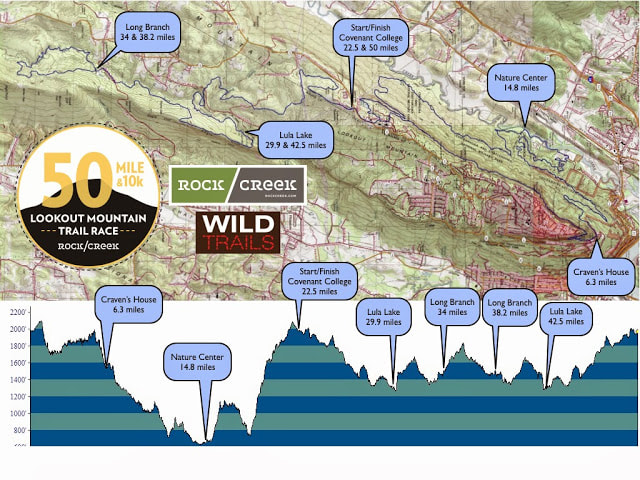
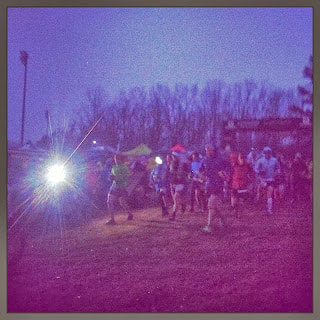

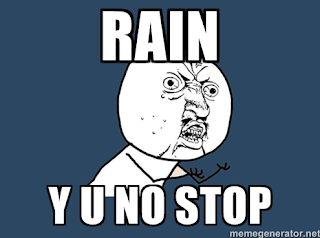

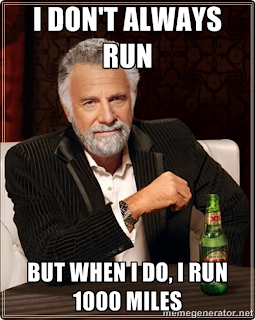

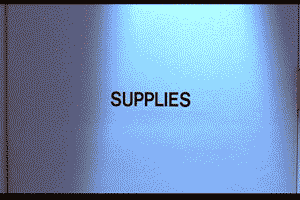
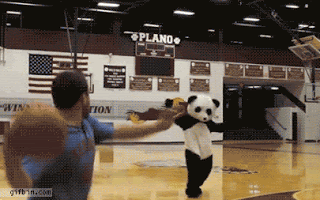
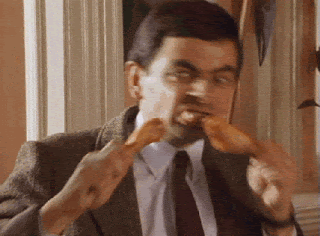
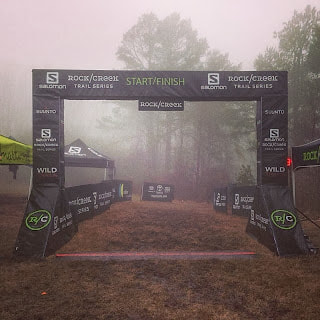

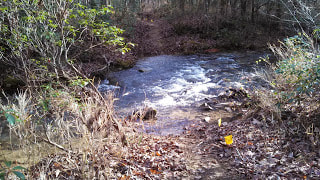
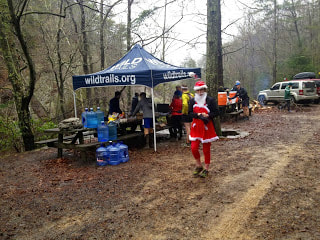
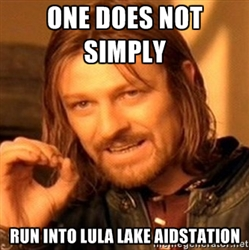
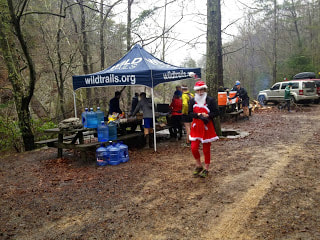
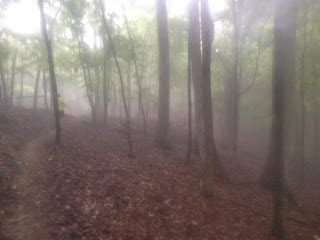

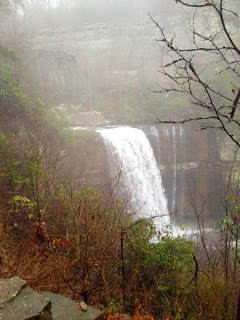

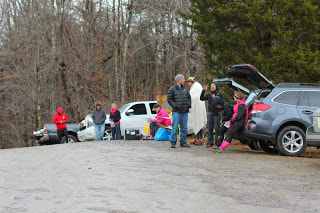


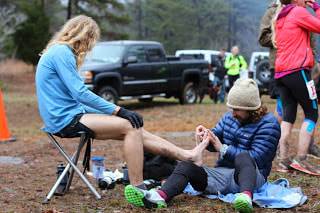
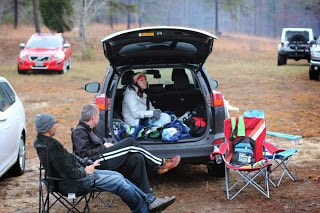

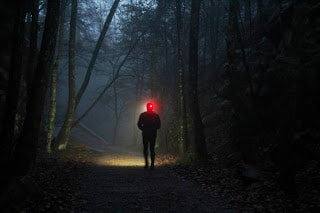
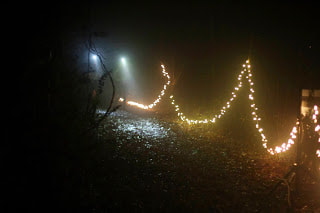
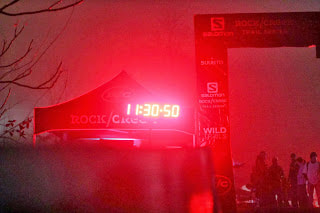
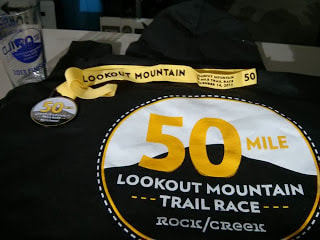
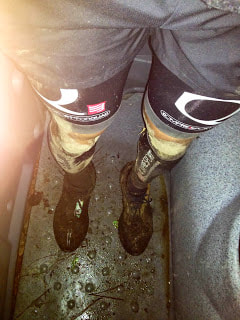
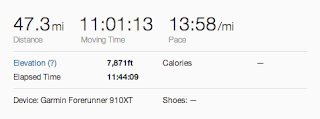

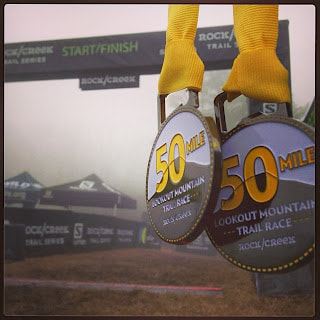
 RSS Feed
RSS Feed

